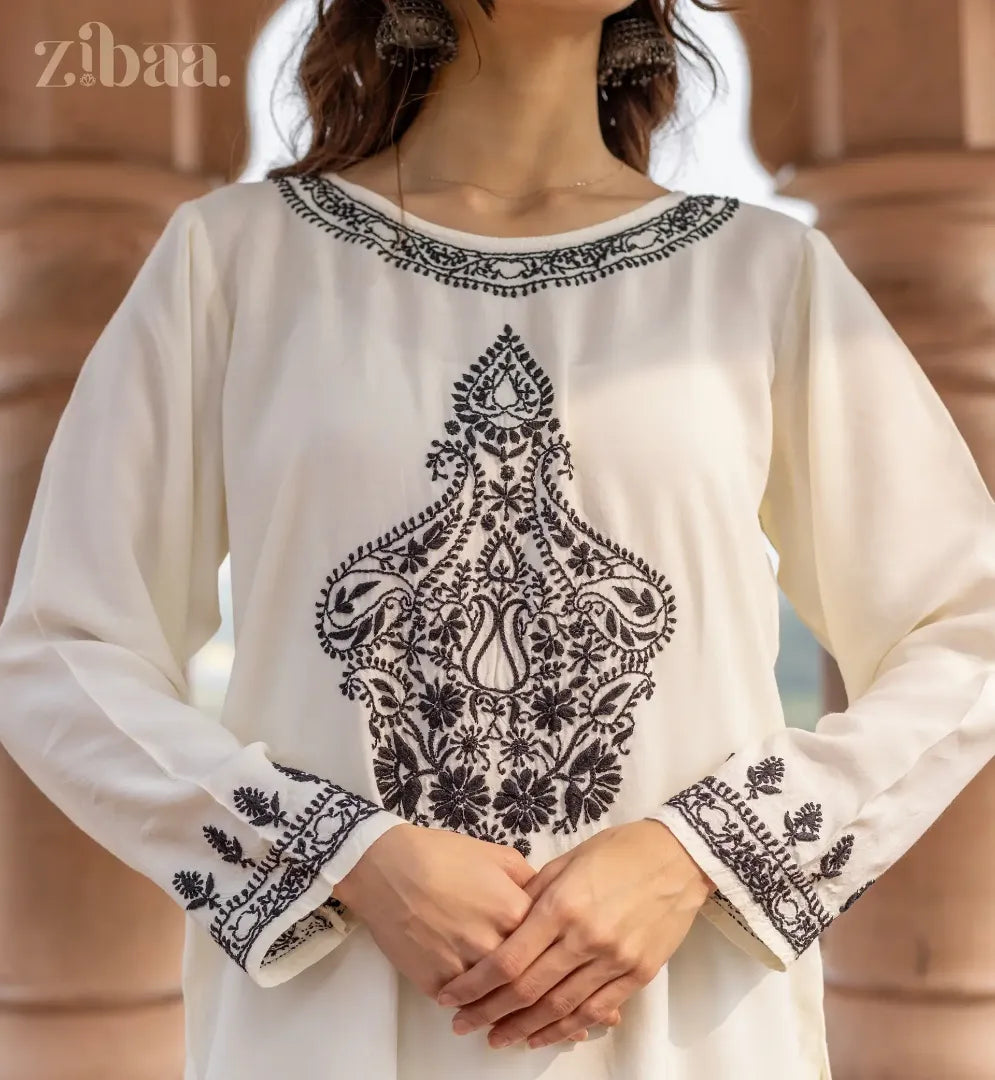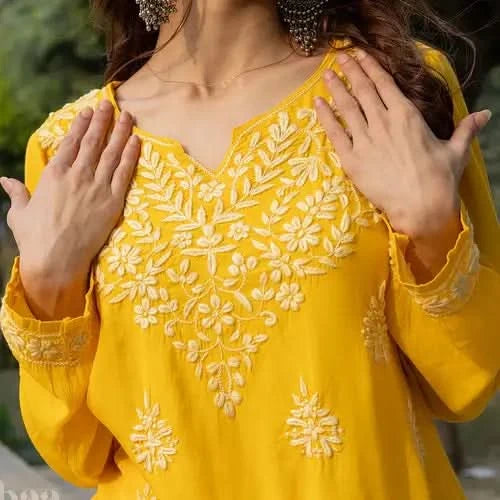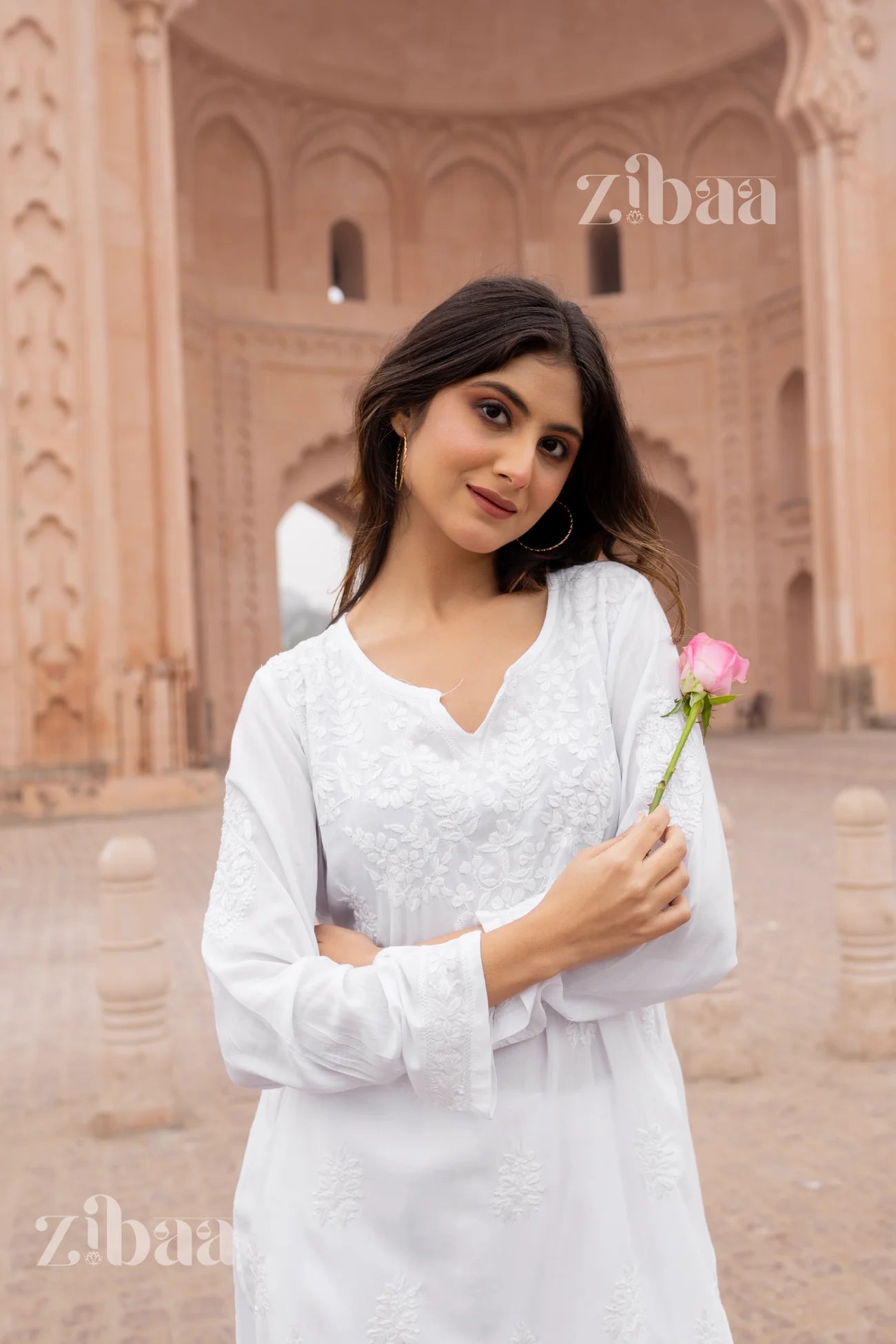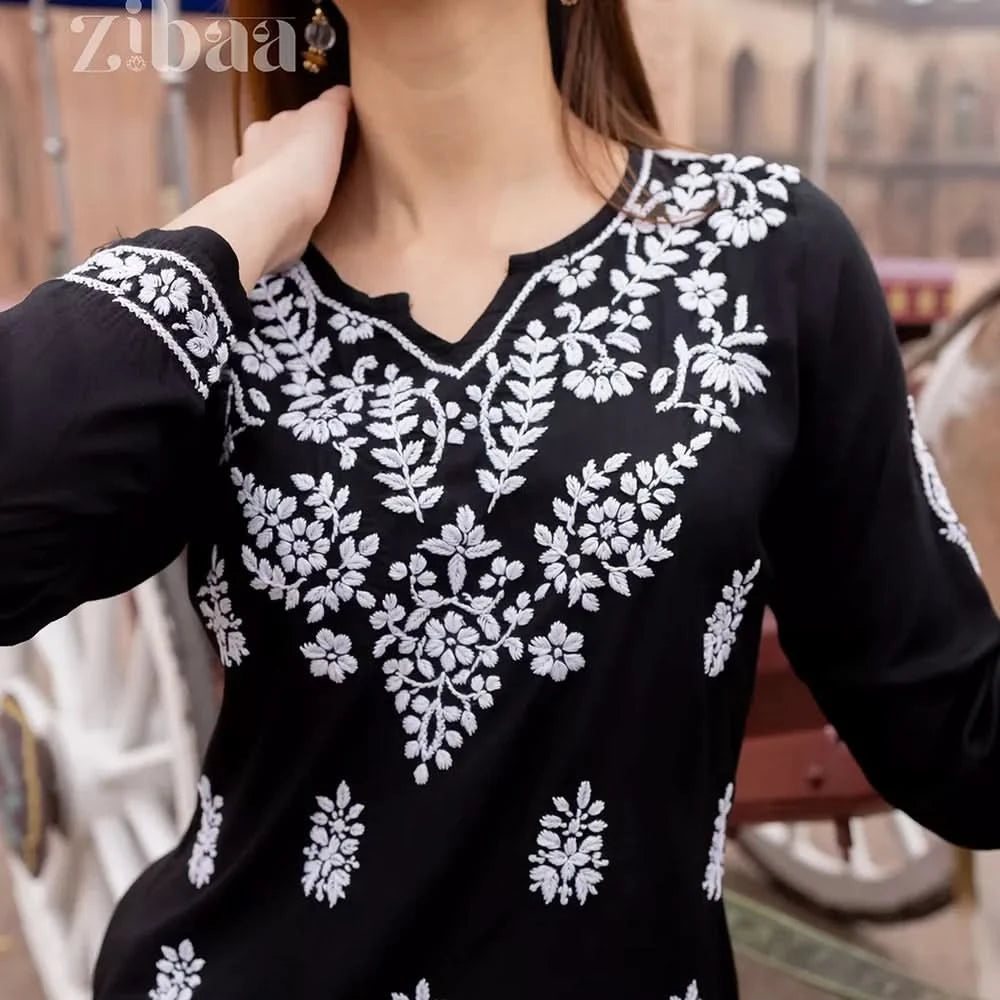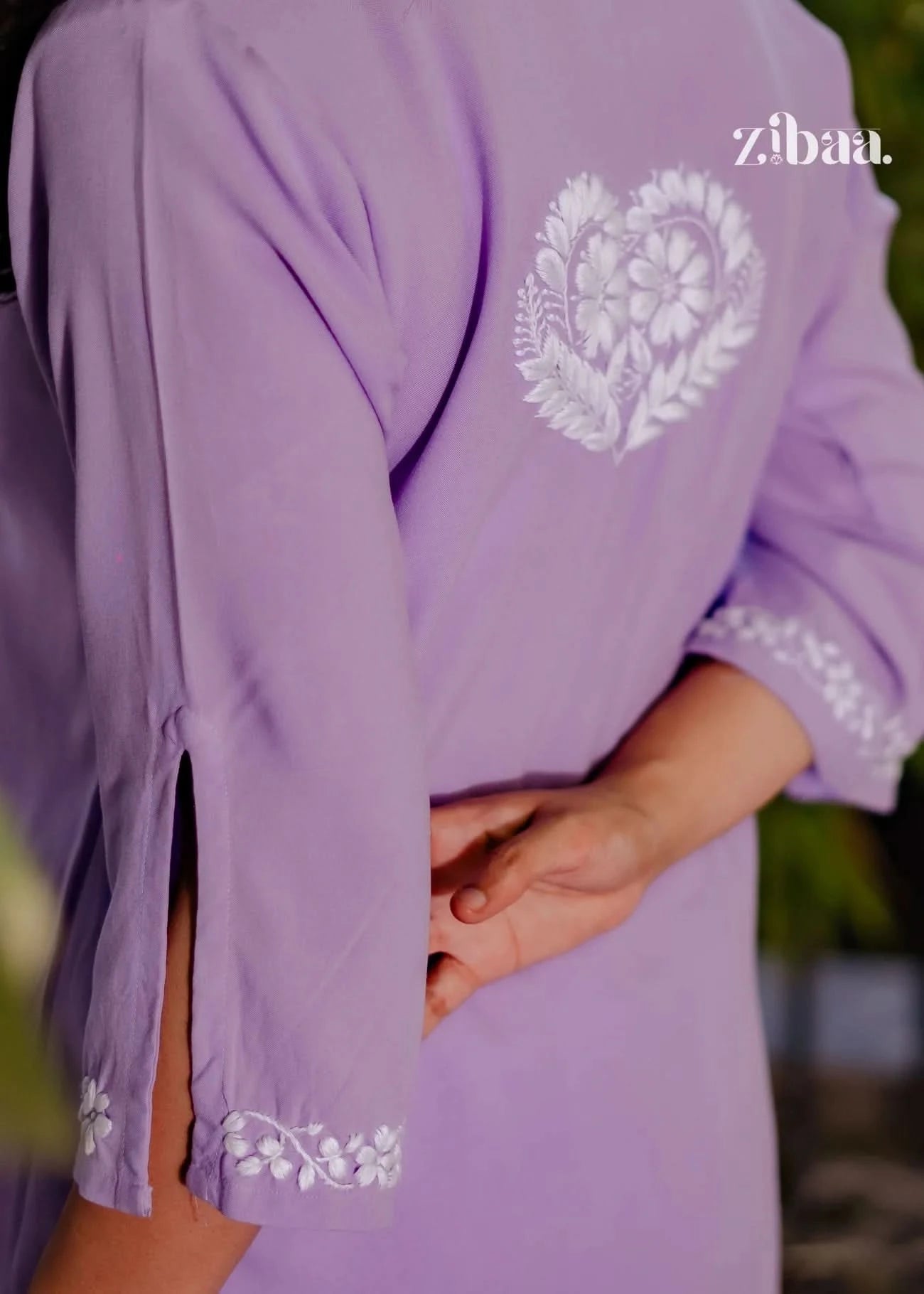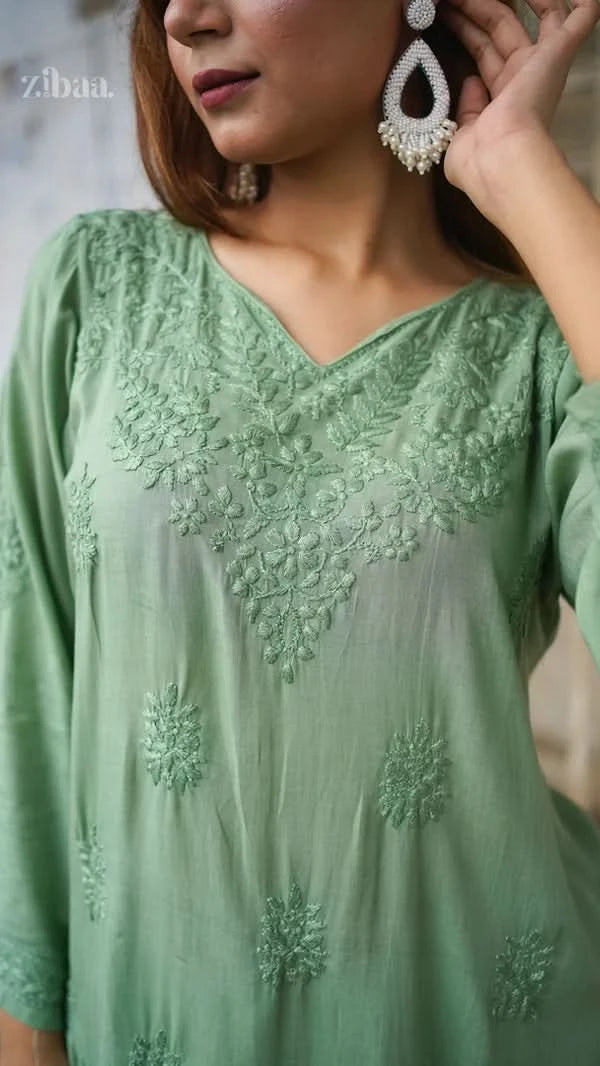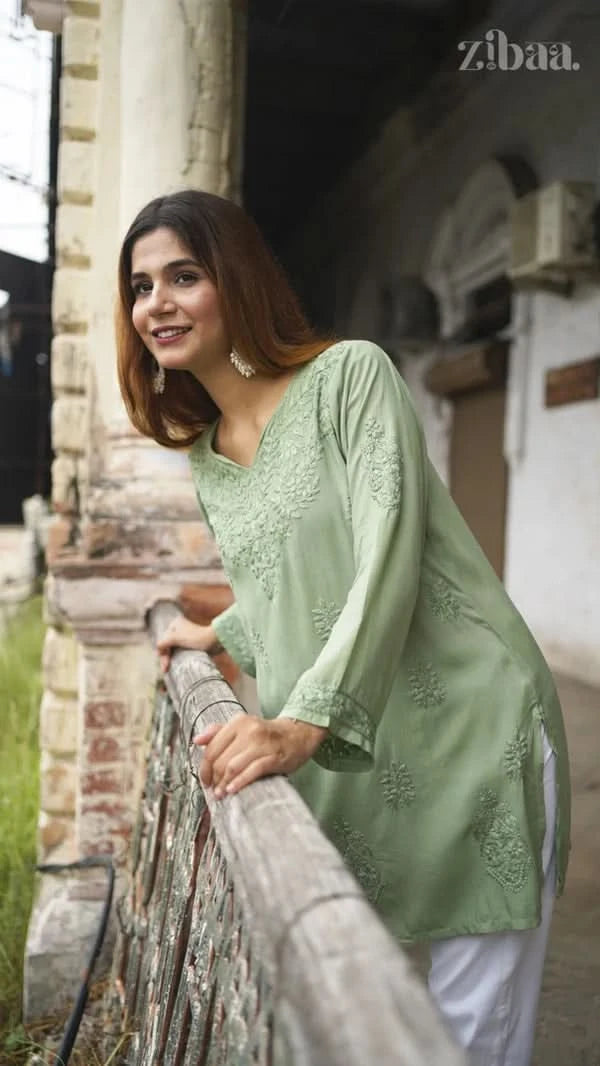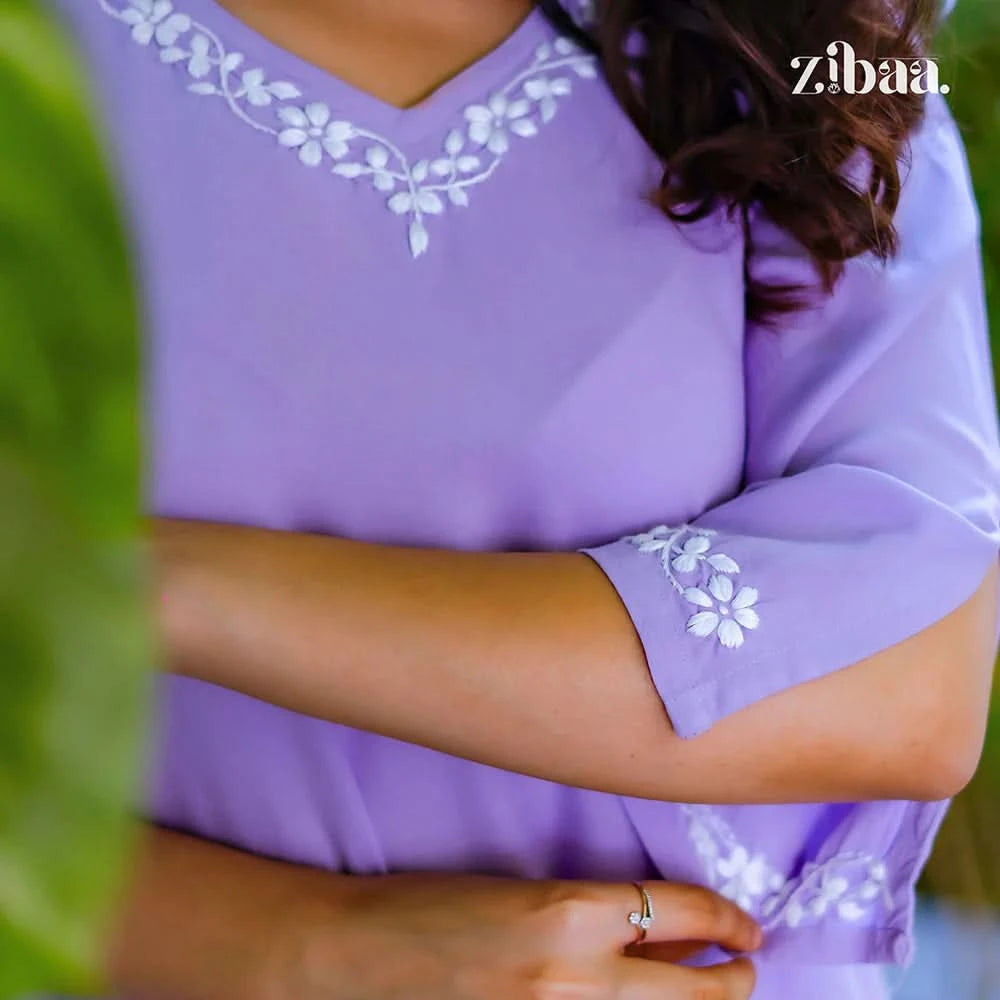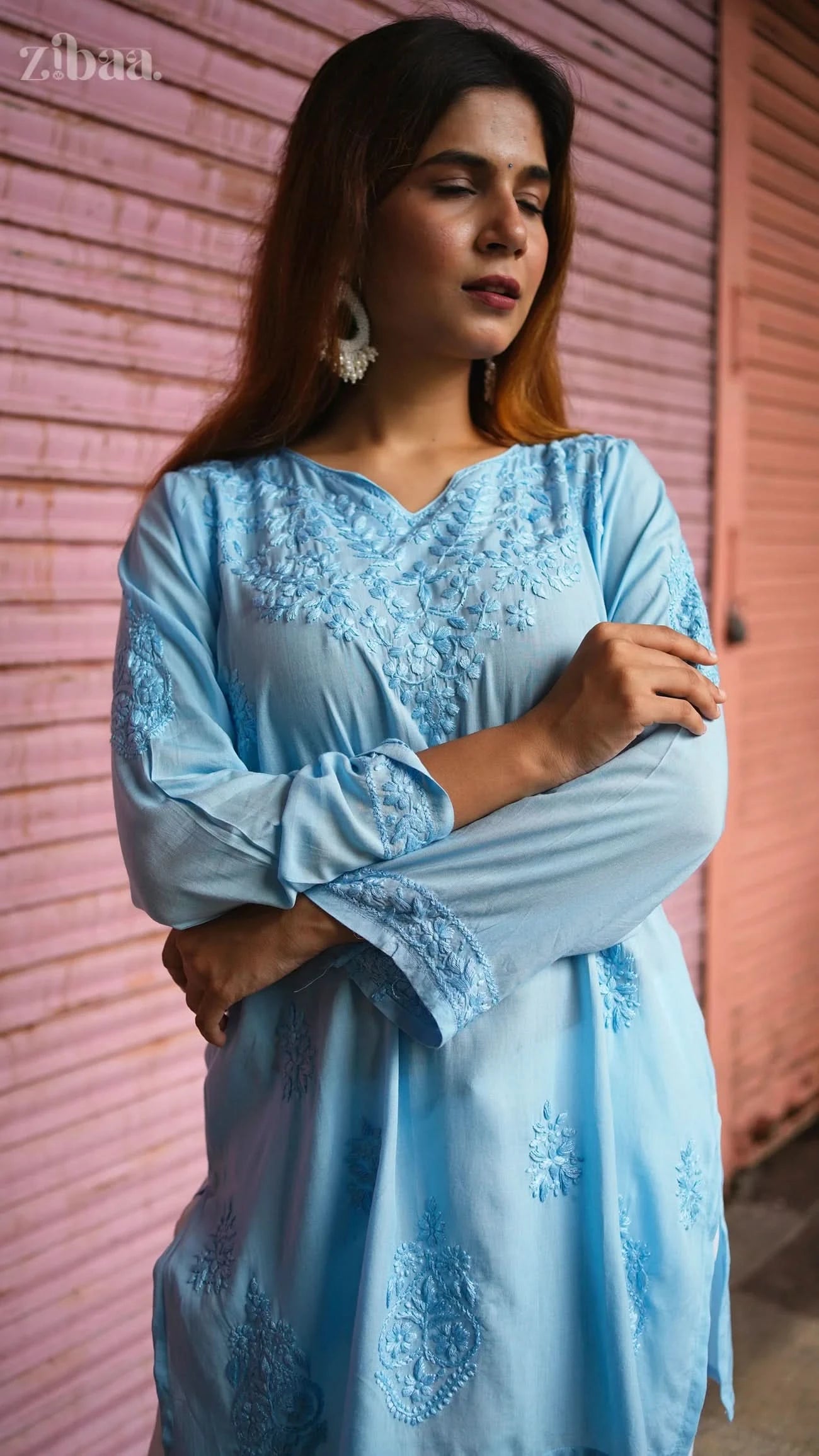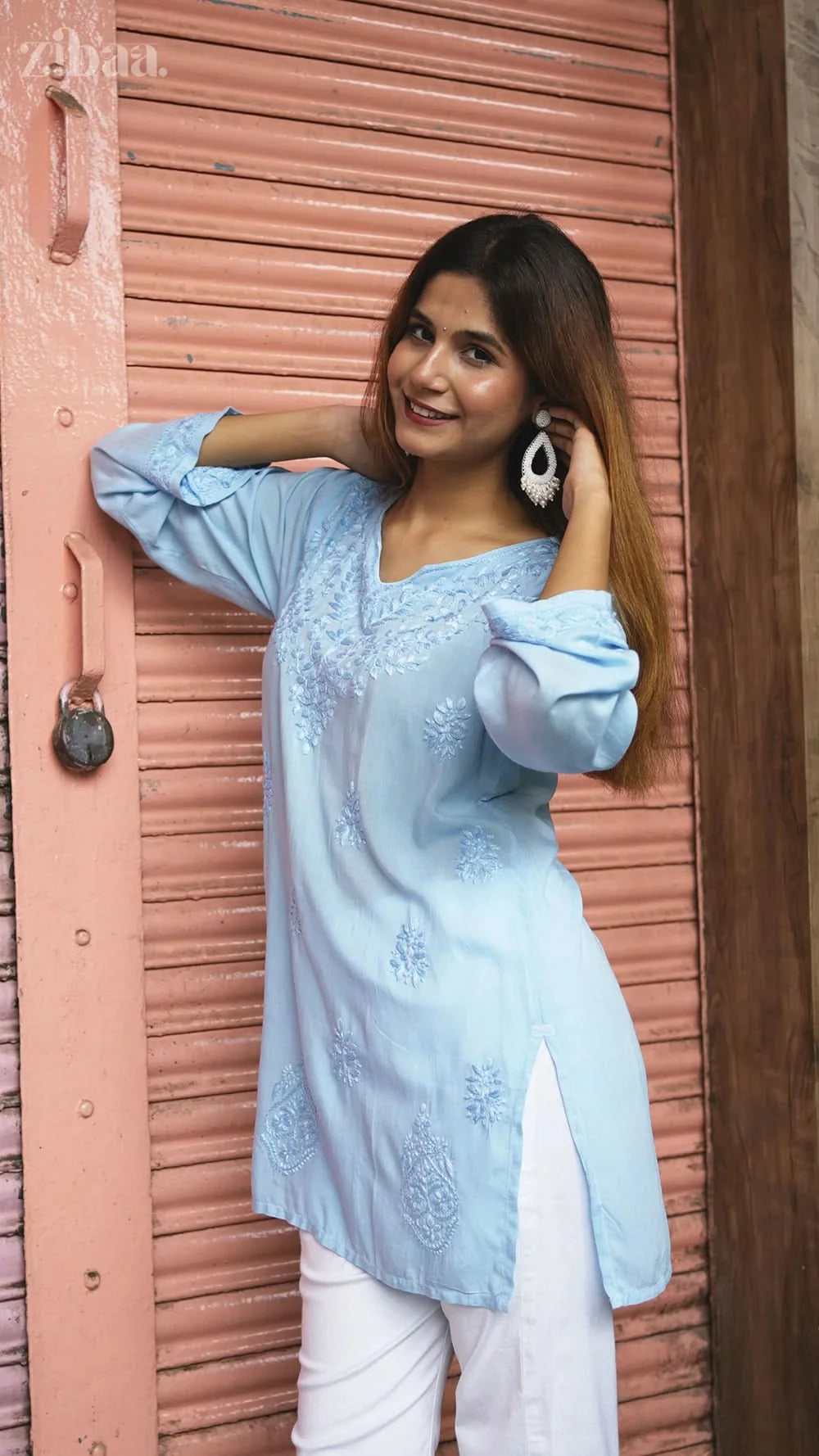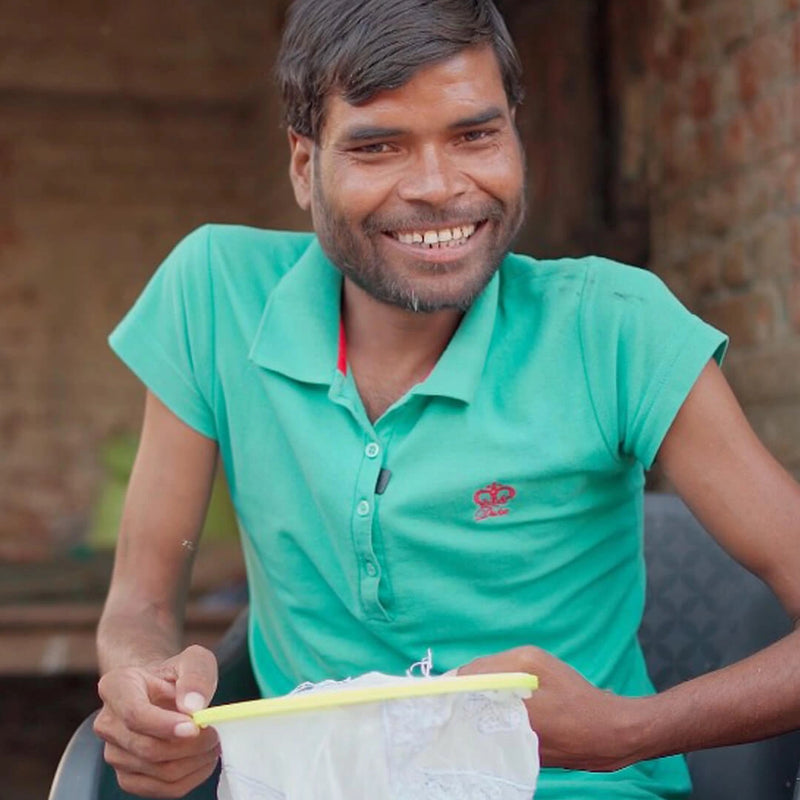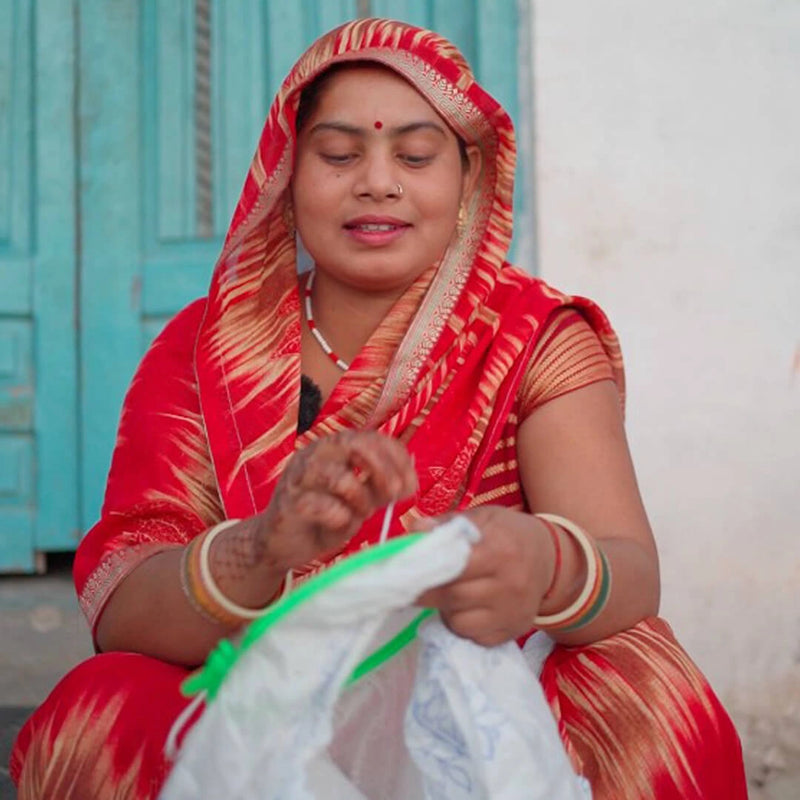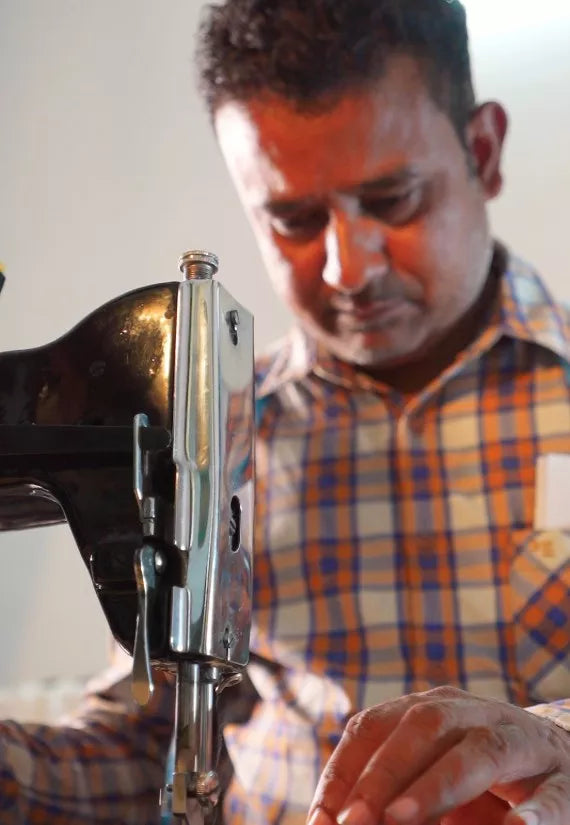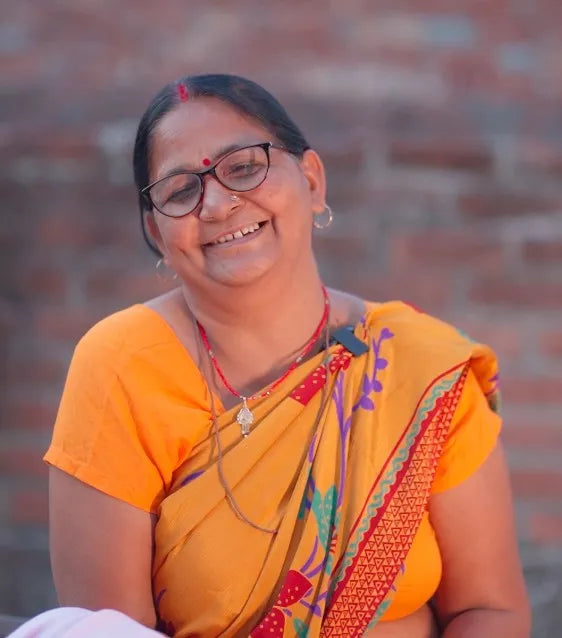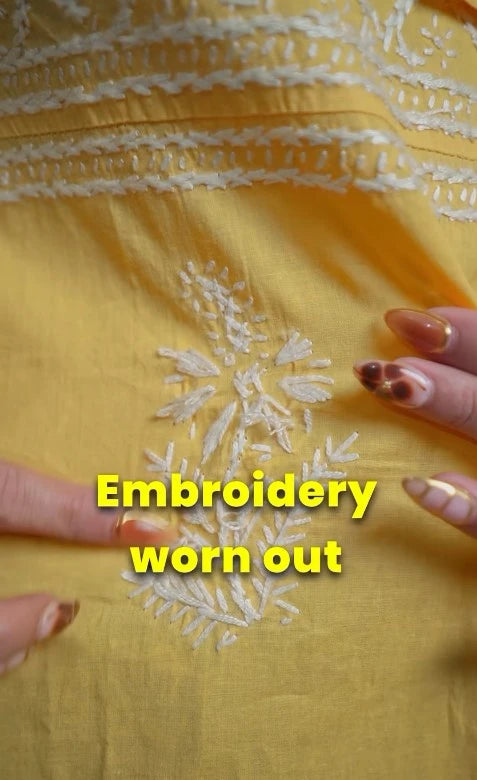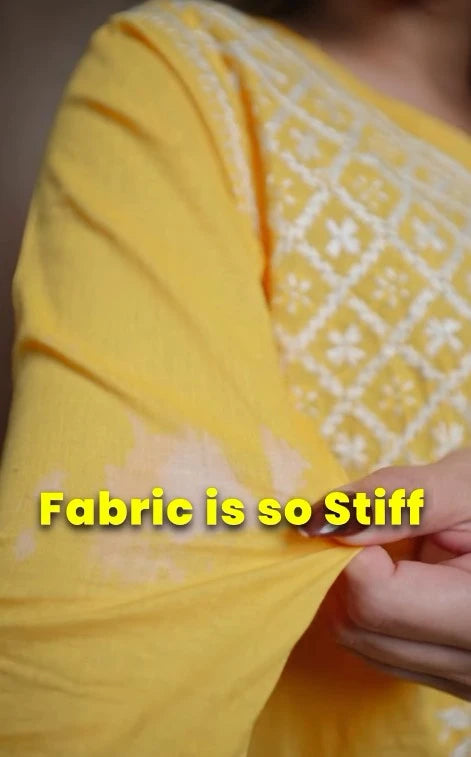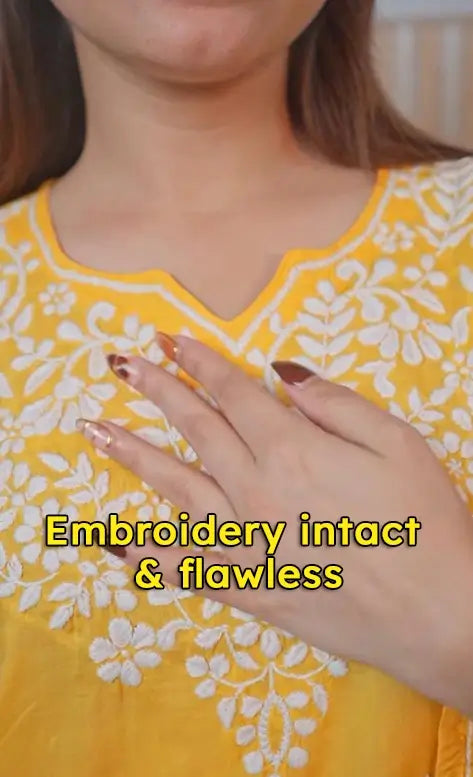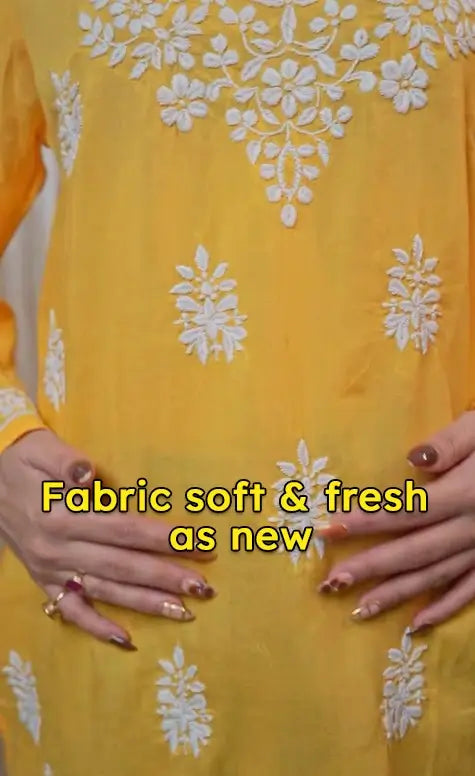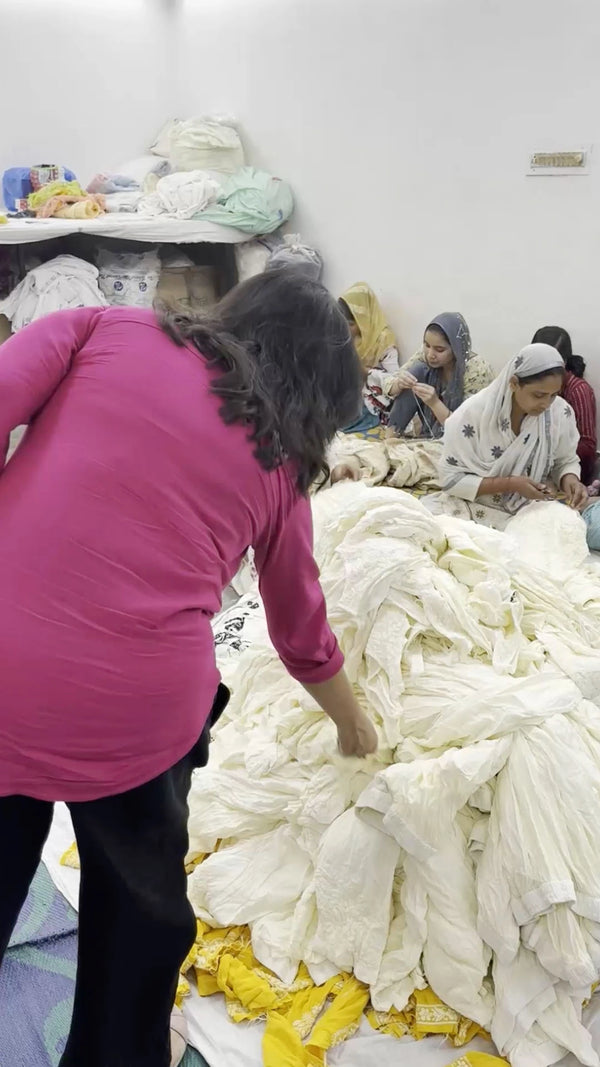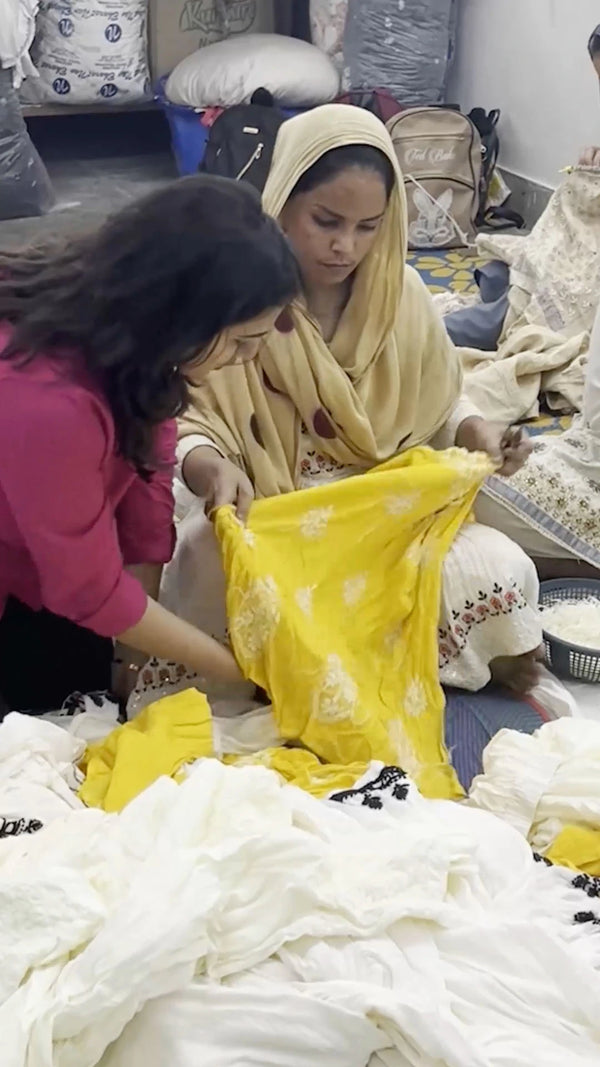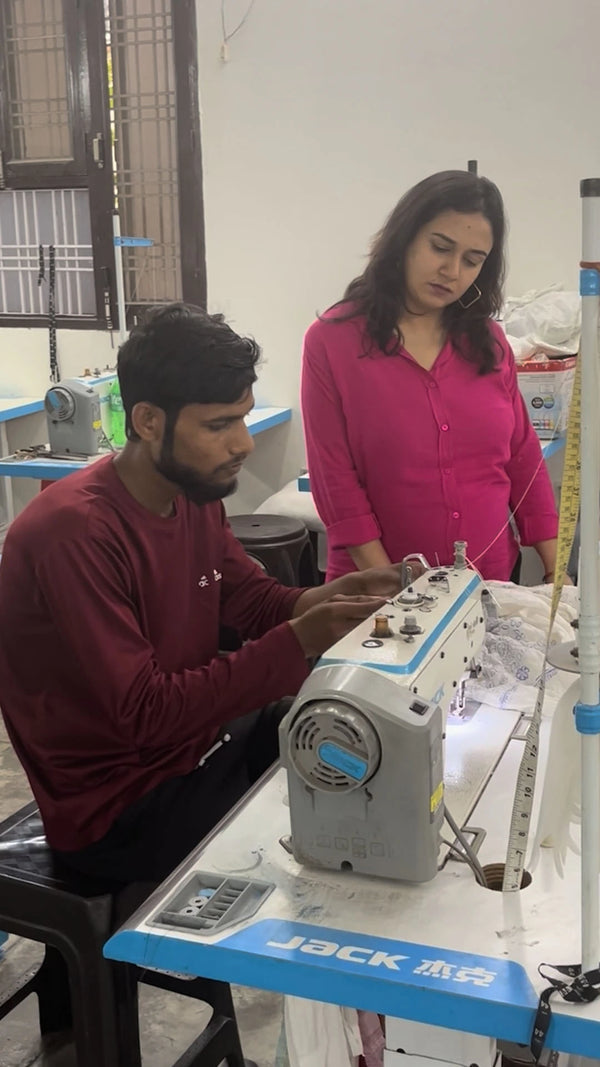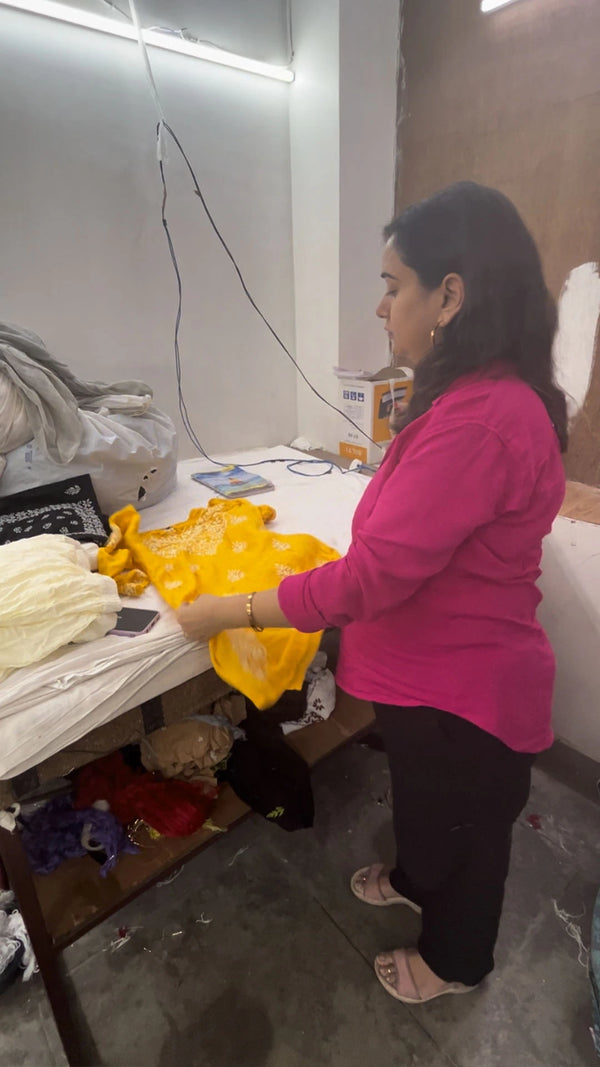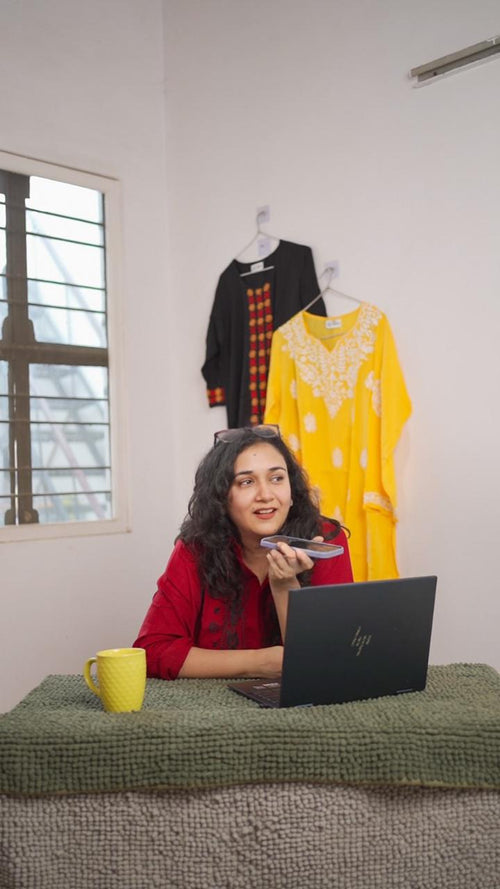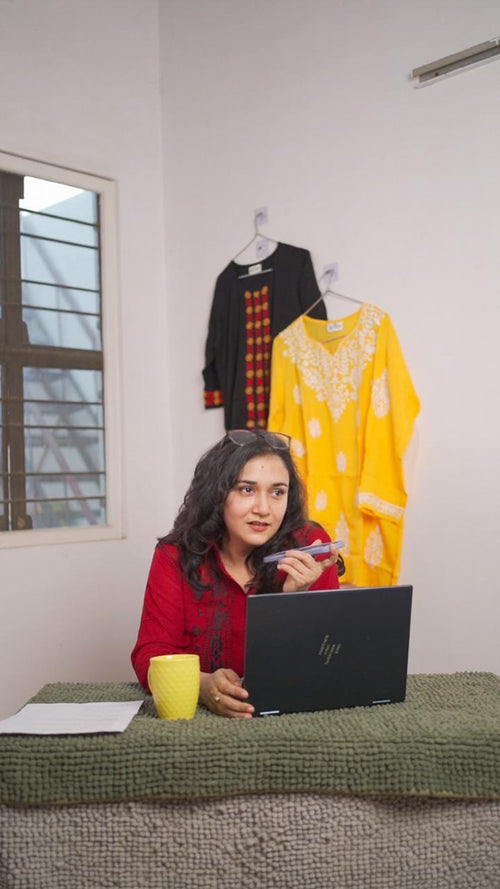Inception of Chikankari Kurti In India
The beautiful art of Chikankari embroidery started in Lucknow, India, during the Mughal rule in the 16th century. The word Chikankari comes from the Persian language. 'Chikan' means embroidery in Persian.
When the Mughals came to India, they brought the art of delicate embroidery work with them. Local craftsmen adopted this style and made it their own. Over time, Chikankari embroidery became a speciality of Lucknow.
During the 18th and 19th centuries, the Nawabs of Awadh ruled over the region of Lucknow. They loved the arts and supported local crafts. Under them, Chikankari embroidery flourished. Artisans began using traditional Indian designs and motifs in their work. Flowers, leaves, vines, and geometric patterns became trademarks of Chikankari's work.
The craftsmen started embroidering white thread on fine white cotton or muslin cloth, which gave Chikankari's work its delicate and dreamy look. Many embroidery stitches were developed, making the patterns very intricate. Some famous stitches are taipchi, pechni, phanda, and jaali.
Slowly, Chikankari embroidery became a marker of Lucknow's culture and heritage. From royal clothes to daily wear, people wanted Chikankari to work on their dresses. The patterns looked beautiful, and the clothes were comfortable in the heat.
Over many years, Lucknowi Chikankari has maintained its unique charm. White-on-white embroidery looks clean and classy. It takes a lot of skill and patience to do such fine work on sheer fabric. The embroidered designs seem to float softly on the cloth. The craftsmen have also created modern variations while preserving the traditional style.
Today, Chikankari embroidery is very popular on short kurtis among Indian women:
-
Lightweight Chikankari work enhances simple short kurtis
-
Some short Chikankari kurta have minimal motifs while some have overall embroidery
-
From casual to festive wear, Chikankari kurta for women are versatile
-
They combine traditional art with modern clothing elegantly
Why Did Chikankari embroidery become so popular in India?
-
The Nawabs of Lucknow were great patrons of this craft and played a key role in its development. During the 18th and 19th centuries, they ruled the city and showed deep appreciation for local arts and crafts. By supporting the skilled artisans who created this embroidery, they helped refine the stitches and designs. Their encouragement allowed the craft to truly flourish
-
Over time, this embroidery became a proud symbol of Lucknow’s rich cultural heritage. The delicate white-on-white work has been passed down through generations, closely tied to the city’s traditions. This strong connection has ensured the art remains beloved and relevant even today.
-
Chikankari can be used to decorate all types of Indian clothes. It looks beautiful on saris, lehengas, kurtis, scarves and more. Because it goes well with many styles of clothing, the demand has grown.
-
Chikankari short kurta for women is comfortable to wear in India's hot climate. The light fabrics like cotton and the soft embroidery make the clothes suitable for hot weather. The good airflow keeps the wearer cool.
-
The handmade embroidery work is very detailed and intricate. Craftsmen use tiny precise stitches to make complex designs. People love the wonderful handmade quality of Chikankari.
-
Craftsmen keep innovating new designs by using different stitches, patterns and styles. This creativity keeps Chikankari relevant and appealing.
-
Chikankari products can now reach more markets in India and worldwide. So more buyers can purchase these handicrafts and sales are increasing.
-
Famous fashion designers use Chikankari in their clothes. This has made this traditional embroidery popular again.
-
The government helps the craftspeople by giving training, equipment and aid. This helps them improve their skills and make better products.
A Tabular Representation
|
Year
|
Revenue (INR Crores)
|
Year-on-Year Growth (%)
|
|
2015
|
200
|
-
|
|
2016
|
250
|
25%
|
|
2017
|
310
|
24%
|
|
2018
|
380
|
23%
|
|
2019
|
470
|
24%
|
|
2020
|
590
|
25%
|
|
2021
|
750
|
27%
|
|
2022
|
950
|
27%
|
|
2023
|
1200
|
26%
|
Chikankari short kurti
Chikankari kurtis are one of the most popular ethnic wear choices for any Indian women. And the short kurti style offers comfort and elegance perfect for everyday wear.
Chikankari short kurti has a flowy silhouette falling to mid-thigh or below. They are shaped like a tunic with short sleeves and side slits for ease of movement. The round or V-shaped neckline flatters the neck and face.
These kurtis shine with delicate Chikankari hand embroidery done in white thread on the fabric surface. Floral motifs with swirling vines and leaves are most common. Some kurtis have minimal embroidery like just around the neckline or hem. While others feature allover embroidery for a richer dressy look.
The minimalist white on white embroidery lends an airy, pristine beauty to the kurtis. Being handmade, each piece shows the artisan's fine craft. The patterns seem to float gently over the fabric.
Short Chikankari kurta go well with leggings, jeans or tights on casual days. They can be dressed up a bit with embroidered jeans, palazzos or skirt for a day event. Just add some bangles, danglers and mojris to complete the ethnic ensemble.
Made of breathable fabric and silhouettes, these kurtis keep one at ease in hot Indian weather too. The white colour reflects heat and looks fresh.
Chikankari kurti short are ideal for women on the go who want comfort along with ethnic chic. Subtly embroidered or richly covered in artwork, they add graceful versatility to the modern Indian woman's wardrobe.
What are the different styles available in short chikankari kurtis?
Chikankari short kurti for women is one of the most loved ethnic outfits. The short kurti style in particular is preferred for daily wear thanks to its versatility and comfort. These short tunic-like kurtis ending between hip and mid-thigh lend themselves beautifully to intricate Chikankari hand embroidery.
There are many types of Chikankari short kurti for women tailored to suit one's personal sense of style. Here's a look at some of the most popular categories:
These have minimal embroidery like just a tiny motif on the neckline or sleeve ends. Great for regular wear, the simple kurtis are shaped like a trapezoid. Pure white or pastel hues crafted from soft fabrics like cotton or mulmul are commonly used. Pair Chikankari short kurti with jeans, leggings or tights for an effortless fusion look.
As the name suggests, these short kurtis feature all over embroidery on the fabric. Floral patterns with leafy vines and geometric designs rule the motifs. The ivory white embroidery contrasts beautifully with colored fabrics like pastels, deep hues or prints. These kurtis can be dressed up or down seamlessly.
-
Straight Cut Short Kurtis
Straight cut kurtis have no shape or silhouette. They fall straight down from the shoulders like a tunic. Bold block embroidery is commonly seen on straight cut kurtis. Contemporary patterns like digital prints and abstract motifs also feature on these. Pair with slim pants or ethnic bottoms.
Inspired by the Anarkali silhouette, these short kurtis have a flowy flare from the empire bodice. Intricate Chikankari motifs embellish the yoke or overall kurti. The flared anarkali kurtis add bounce and volume. Wear them for ethnic events with leggings or churidars.
-
Asymmetrical Short Kurtis
As the name suggests, asymmetrical kurtis have unequal hemlines with one side longer than the other. The embroidered necklines, yokes and borders create an impression of layered clothing. High-low hems with front slits are also seen. Pair with jeans, palazzos or fusion pants.
Cotton is the perfect summer fabric and a popular choice for Chikankari kurtis. The lightweight, breathable cotton kurtis feature white on white embroidery. Understated motifs adorn the minimalist shape. Chikankari short kurti cotton are ideal for warrm Indian summers and daily casual wear.
These kurtis have side slits that run along the length of the sides. The slits allow greater freedom of movement and airflow. Bold floral Chikankari designs decorate the fabric between the slit spaces. Team these with harem pants, leggings or tights.
As the name suggests, crop kurtis are shorter and fall above the waistline. Intricate patterns embellish the overall cropped length. These kurtis are great for pairing with high-waisted pants, skirts and jeans. The flirty cropped style offers a modern twist.
So whether you like minimalist or bold, traditional or fusion, there are so many types of Chikankari short kurti out there. You're sure to find the right embroidered kurti to complement your style and occasion beautifully. Chikankari craft lends its luxurious elegance to make the humble kurti a versatile wardrobe must-have.
|
Stitch Name
|
Description
|
|
Tepchi
|
The tepchi stitch makes straight rows of stitches. It outlines most motifs and patterns. Tepchi is used to show designs like vines, flowers, animals, borders etc.
|
|
Bakhiya
|
The bakhiya stitch is done on the backside of the cloth. It makes lovely 3D-like patterns that can be seen on the front side. This is the most famous stitch of Chikankari embroidery.
|
|
Hool
|
The hool stitch involves sewing many tiny knots close together. This makes small circular shapes like flower pollen or water drops. These stitches together form flowers and plant designs on embroidered leaves and petals.
|
|
Zanzeera
|
The zanzeera or chain stitch uses loops of thread linked together. It outlines motifs and makes detailed designs. Zanzeera adds nice shape and border to the embroidered patterns.
|
|
Murri
|
Murri stitch has many tiny knots sewn near each other. This gives a 3D effect to the design. Murri stitch makes textured cores of flowers and leaves within motifs.
|
|
Phanda
|
The phanda stitch uses small cross stitches sew in rows. It works with the murri stitch to add spots of color or texture to motifs. Grouped phanda stitches can depict leaves, flowers, plants etc.
|
|
Jali
|
In jali stitch, the fine cotton threads are separated to make a net-like pattern. The lace-like jaali stitch adds lightness and sophistication to designs.
|
|
Katao
|
The katao stitch involves cutting the fabric and neatly sewing along the cut edges. This stitch makes grand designs for framing motifs or covering saree borders. Katao stitch shows the specialized skill of the craftsmen.
|
What fabrics work best when making short kurtis?
The beauty of Chikankari embroidery truly comes alive on lightweight, airy fabrics. The intricate white-on-white threadwork lends the kurtis an ethereal, dreamy look. When selecting base fabrics for Chikankari Kurtis, keep these aspects in mind:
Cotton Fabrics
Cotton is a quintessential Indian summer fabric – breathable, easy to maintain and absorbent. Pure cottons like Muslin Cotton and Cotton Cambric are traditionally used for Chikankari. The matte texture provides the perfect natural backdrop for the embroidery to shine.
Go for handloom cotton materials like Muslin Mulmul, Bengal Cotton or Chanderi Cotton for luxurious drape and sheen. Cotton fabrics come in various weaves too – from basic to jacquard. Light hues work best to contrast with the ivory embroidery.
Khadi Fabrics
Khadi or handspun, handwoven cotton is synonymous with Indian ethnic wear. The rustic textures and lightweight feel makes it suitable for ornate Chikankari work. Khadi absorbs sweat and prevents stickiness in the heat. Go for off-white, pastel green, lemon yellow to accentuate the motifs.
Silk Fabrics
Silks like Tussar, Banarasi, Dupion, and Raw Silk add a touch of elegance perfect for occasions. The luxurious sheen of silk makes the Chikankari stand out. Lighter silk variants can be worn in summer too. Avoid very thick or overly glossy silks that may overshadow the needlework.
Linen Fabrics
All-natural linen fabric is super airy and absorbs moisture quickly. The matte crinkled texture of linen lends an earthy vibe. White linen sets off the embroidery beautifully. Blends of linen and cotton provide durability and comfort. Linen works in all seasons, giving a effortlessly graceful look.
Georgette Fabrics
Sheer georgette fabric is a popular choice for dressy Chikankari kurtis and sarees. The transparency reveals the intricate embroidery in all its finery. Go for flowy georgette chikankari kurta, mint or sea green to complement the white threadwork. Take care of tiny snags while washing georgette.
So when selecting a fabric for a Chikankari Embroidered Kurti, consider factors like - weather suitability, occasion, washability, drape, weave and transparency. Natural fabrics work best to elevate the sophisticated embroidery. Avoid very thick, shiny or heavily textured fabrics that may overpower the delicate needlework. Choose hues that contrast well with the pristine white embroidery.
Stay Cool in Bright Hues - Trending Colors for Chikankari Kurtis in Summer
Summers call for breezy silhouettes and vibrant colors that uplift the mood. When it comes to Chikankari kurtis, while pristine white is eternal, playful colors never fail to catch the eye. Here are some trendy color options for Chikankari short kurtis perfect for the summer season:
-
Chirpy Yellows: Yellow is the color of sunshine, optimism and energy. From bright canary and lemon yellow to mellow pastels, various shades look lively. They perfectly complement the white Chikankari embroidery. Pair yellow chikankari kurti with white pants or skirts.
-
Cotton Candy Pinks: Pretty in pink! From blush rose to bubblegum pink, vibrant pinks add femininity to the mix. Contrast floral white embroidery with soothing pinks for a youthful twist. Pink Chikankari kurti paired with white palazzo make ideal daywear.
-
Regal Reds: Red never fails to make a style statement. Be it crimson reds or lighter maroon, the rich color looks celebratory. Red Chikankari short kurti with minimal embroidery make great festive or evening wear. Match them with beige or black bottoms.
-
Aqua Blues: Blue is the color of the serene sea and open skies. Ink blue, aquamarine or pastel blue Chikankari kurtis have a soothing vibe. The ivory embroidery provides a nice contrast on the blue. Wear it with white sharara pants or slim fit churidars.
-
Ethnic Black: Black is versatile, elegant and slimming. A black Chikankari short kurti with white Chikankari embroidery has a classy vibe. The colour beautifully highlights the intricate needlework. Style it with palazzos, cigarette pants or skirt for evening events.
-
Earthy Beige: Subtle beige or stone colors complement Indian skin tones well. They make for great daily workwear too. Team simple beige Chikankari kurtis with jeans, trousers or leggings on casual days. The neutral color ensures easy pairing options.
Elevated Ethnic: 5 Ways to Style Chikankari Short Kurti
These kurtis look beautiful with both Indian and Western bottoms. Here are 5 simple ways to wear your short kurtis and look stylish:
Palazzos are wide leg pants that give a flowy look. Pair plain cotton chikankari kurti or silk palazzos in a light color with your embroidered kurti. Add some bangles, earrings and flats to complete this trendy outfit. This combination is nice for small get-togethers.
Jeans are so comfortable and easy to wear. Pick colorful or printed skinny jeans to match with your short kurti. Add some junk jewelry like big rings and bracelets. Carry a sling bag and wear flats or sneakers to look casual and chic.
Shararas have flowy wide legs and look grand. Pair a short kurti with a sharara in a matching color. Use small earrings and a clutch bag. Wear heels or dressy flats to get a glamorous look for parties.
Plazzos are like palazzos but have neat pleats. Match a solid colored plazzo with a boldly embroidered kurti. Finish the look with hoop earrings, high heels and loose hair. It's perfect for festivals and weddings.
Straight pants in cotton, linen or denim look smart with short kurtis. Pick kurtis with modern embroidery like geometric or digital prints. Add white sneakers and a watch to get a casual outfit.
So a Chikankari kurti short gives you many stylish options. You can dress up or dress down your look by choosing the right bottom-wear, footwear and accessories. Try these easy ways to look fab every day!
Bollywood Divas Rock Chikankari Short Kurtis With Style
Lucknow's iconic Chikankari embroidery has won hearts worldwide including our favorite Bollywood divas.
Deepika Padukone looked resplendent in a pristine white Chikankari kurta paired with palazzos. The delicate embroidery along the neckline and hemline elevated the simple outfit. Deepika accessorized with statement earrings and bangles giving major fashion goals.
Kareena Kapoor Khan showed her love for handloom weaves by wearing a mulmul cotton Chikankari short kurti in creamy white. She paired it with cigarette pants and her signature smokey eyes for a smart casual vibe. Kareena's minimal styling allowed the meticulous embroidery to shine.
Alia Bhatt embraced a contemporary take on the Chikankari kurti by opting for a sleeveless Anarkali style kurti. The ivory and gold embroidery formed unique patterns and added regal flair. She teamed it with matching culottes and oxidized jewelry for a glamorous modern ethnic look.
Katrina Kaif flaunted casual chic in a pastel pink Chikankari kurti short decorated with white floral embroidery. She wore it with boyfriend jeans and refused accessories letting the kurti be the hero. This fuss-free everyday style is easy and comfy.
Sonam Kapoor Ahuja wore a midnight blue Chikankari kurti adorned with intricate white thread embroidery for a photoshoot. The burst of colorful flowers formed a pretty contrast against the dark kurti. Sonam kept the look minimal to highlight the meticulous needlework.
Priyanka Chopra made heads turn on her visit to Lucknow in a dainty floral embroidered Chikankari short kurti. She embraced the local heritage by wearing the artisanal craft kurti with slim white churidars. Simple hoops and pumps completed her classy ethnic look.
So from runways to airports, Bollywood divas are embracing Chikankari short kurtis in their own glamorous style. The timeless heritage craft of Lucknow continues to win hearts all over.


